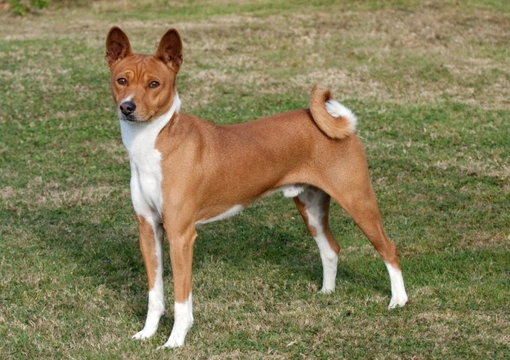
What is a basal dog breed? Is your dog a basal breed?
Whether you own a purebred dog, a mongrel or something of a grey area like a Cockapoo (which is also a mongrel or cross-breed but that is widely recognised by most dogs lovers as a uniform if non-pedigree dog type), most dog lovers have a basic understanding of what a dog breed is, and that each breed has things in common with its other members that aren’t shared in full by other breeds in their turn.
Dog breeds are also divided up into wider group types that share broad but not specific common traits, like terriers versus gundogs versus toy dogs and so on.
Understanding these things means understanding what makes a breed a breed – uniformity within its members, but uniqueness from other dogs, and the term “dog breed” and its application is a human invention – dog breeds were ultimately developed and created, they didn’t originate on their own without human input!
This actually only occurred in the 19th century, which means that most of our oldest recognised dog breeds aren’t very old at all in evolutionary terms.
However, some dog breeds can trace their histories back to origins much more distant than others, and remain extant in a form much more similar to their oldest ancestors than most – and they’re genetically distinct from dogs of all other types too.
There are some dog breeds that are considered to be “ancient breeds” (both breeds still around today and those long extinct) but also, a unique set of just 16 breeds we still know today that fall somewhere between ancient history and modern times in terms of genetic origins. We call these “basal dog breeds,” and your dog might be one of them!
If you’re wondering “what is a basal dog breed” or what dog breeds are basal dogs, this article will tell you the answers. Read on for a basic introduction to basal dog breeds.
What is a basal dog breed?
The term “basal dog breed” is one that even many experienced dog lovers have never heard of, because the first large-scale studies into the genetics and history of dog breeds have only taken place in the last decade or two.
So, what’s a basal breed? Well, first you have to understand the genetics behind the term.
Back in 2012, a large-scale study was undertaken across 1,375 individual dogs from a total of 35 different and widely recognised pedigree breeds, and this information was combined with existing genetic data from 19 wolves and previous dog breed genetics studies, totalling 121 different unique dog and wolf breeds all told.
The study looked at 49,000 single nucleotide polymorphisms (a method of measuring distinct genetic variations between different members of a common species) within the study group, and across the full sample of dogs and wolves, identified a very clear divide at a genetic level between old and new world wolf types and also, a total of 16 dog breeds.
These dog breeds consisted of 13 breeds identified from a previous study undertaken in 2010, plus an additional 3 from the increased diversity of breeds enabled in the 2012 research.
This total of 16 dog breeds possessing this distinct genetic difference from all of the other breeds were designated as basal breeds, in contrast to the opposing ends of the full spectrum, being ancient breeds and modern breeds respectively.
In fact, it was only during this 2012 study that we first learned for sure that modern breeds only came into being during the 19th century, and despite claims in the histories of many popular modern breeds of very ancient origins, no evidence (either historical or genetic) has been found to support this.
Ultimately, most modern dog breeds (even those that differ hugely in core traits as distinct as size, build and coat style) are much more closely related to each other, share more common genes, and have been interbred or bred from common modern ancestors than we previously thought to be the case.
Interestingly, two of those 16 recognised basal breeds are actually modern cross breeds – or breeds that were created or named in modern times, as the result of the crossing of two other unrelated breeds to create a new type.
So, how did those two breeds end up on the basal breeds list if they’re the result of a modern crossing? Well, the two respective breeds used to create each of them were both basal breeds themselves!
Further, the extant basal breeds that we know today have largely maintained their genetic individuality despite the fact that all of the other modern breeds are very closely related, as a result of physical barriers (like geography and climate) that cultural barriers (such as a low level of trade or commerce with other countries) that have prevented said basal breeds from mixing and so, breeding widely with other dog populations.
What dog breeds are considered to be basal breeds?
So, is your dog a basal breed?
Here are the 16 basal dog breeds we know today, albeit not all of them are found in the UK:
- The Afghan hound
- The Akita
- The Alaskan malamute
- The Basenji
- The Canaan dog
- The Chow Chow
- The Dingo
- The New Guinea Singing Dog
- The Saluki
- The Samoyed
- The Shar Pei
- The Siberian Husky
- The Finnish Spitz
- The Shiba Inu
- The Eurasier (this is one of the two breeds that is a recently named modern breed that remains also a basal breed due to being bred from the crossing of two other basal breeds).
- The American Eskimo dog (and this is the of the two breeds that is a recently named modern breed that remains also a basal breed due to being bred from the crossing of two other basal breeds).



